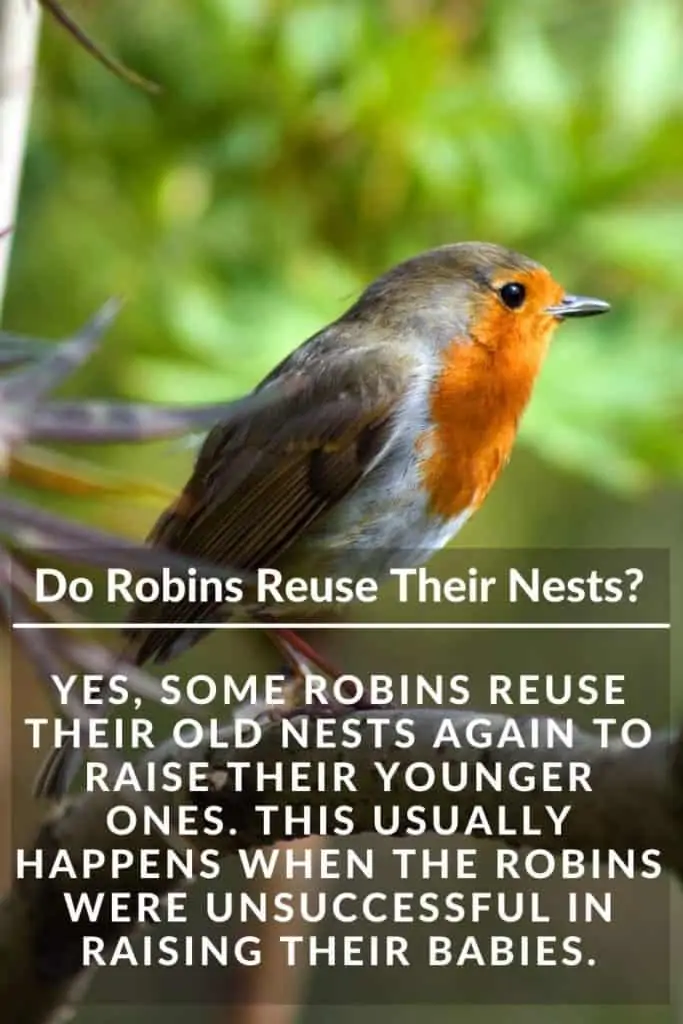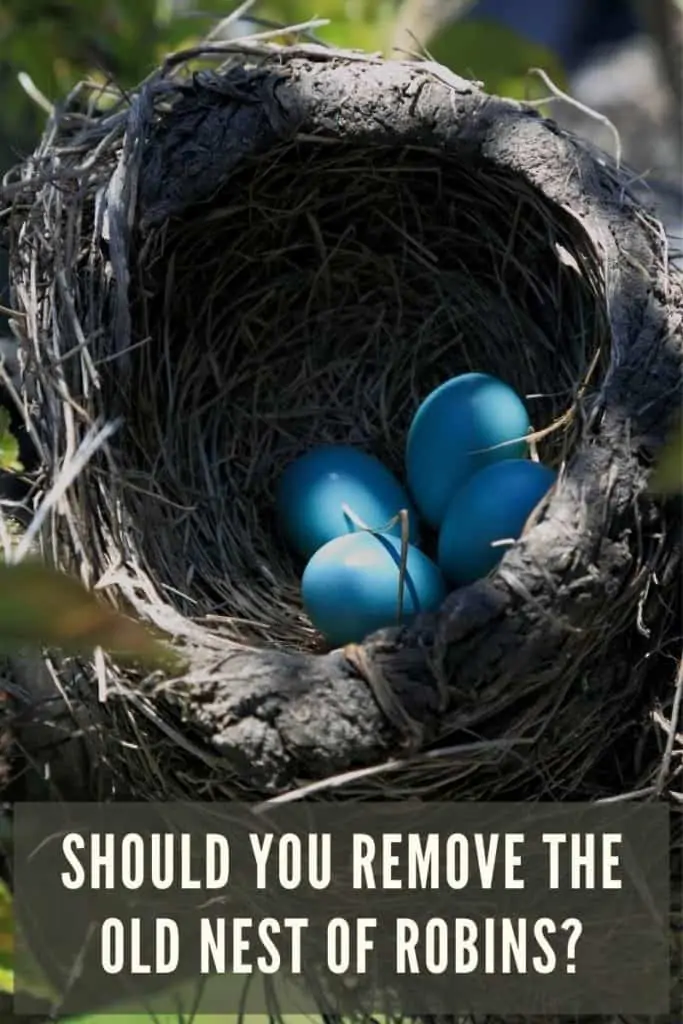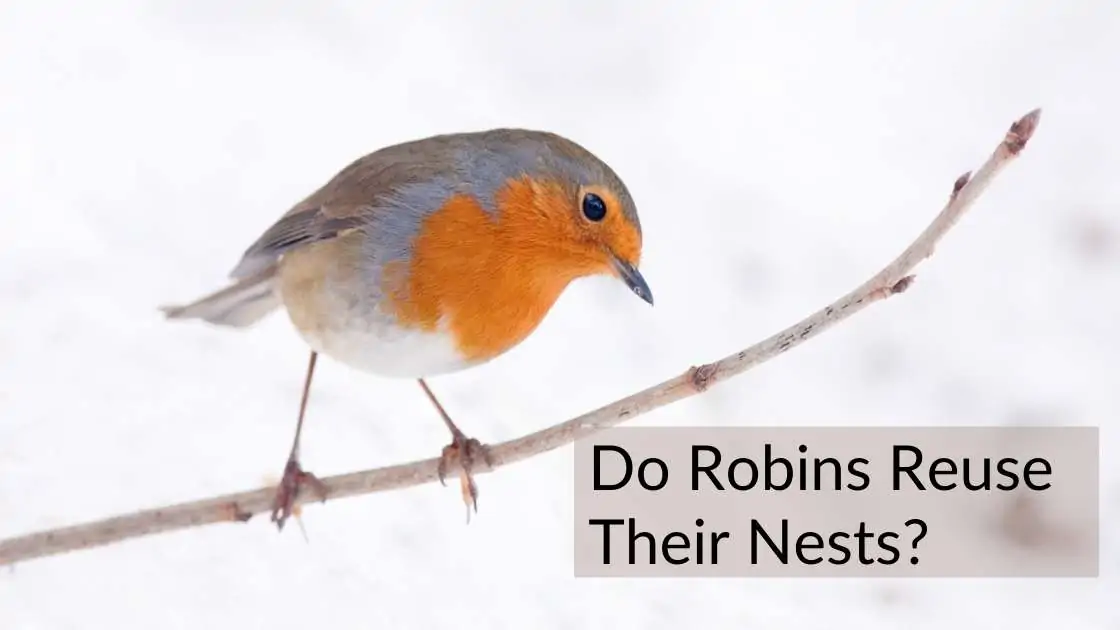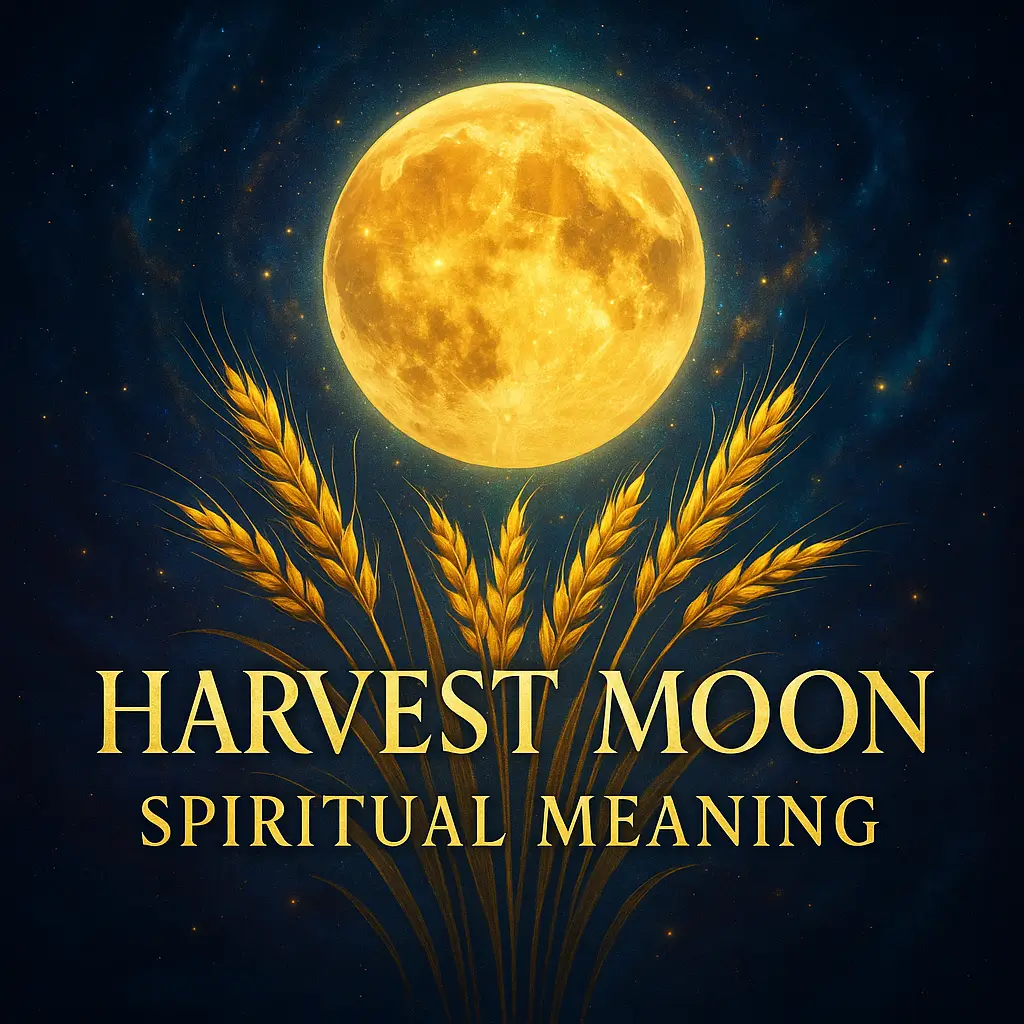“Do Robins Reuse Their Nests?” A question as old as time, carrying the curiosity of countless springtime observers.
The short answer: No, they typically don’t, valuing cleanliness and health. But why do they prefer to build anew each time, and what exceptions might exist?
Teeming with fascinating intricacies, the world of robins’ nesting habits holds more than meets the eye. Delve with us into this remarkable avian behavior, unlocking nature’s marvels one nest at a time.

Table of Contents
- 1 Do robins reuse their nests?
- 2 Overview of American Robins and Their Nesting Habits
- 3 Nest Characteristics and Building Process
- 4 Do Robins Reuse Their Nests?
- 5 Factors Influencing Nest Reuse and Location of Robins
- 6 Nesting Behavior, Reproduction, and Migration Patterns
- 7 Interaction of Robins with Humans and Other Bird Species
- 8 Nest Protection and Cleanliness
- 9 Moving and Abandoning Robin Nests
- 10 FAQs
- 10.1 u003cstrongu003eDo Robins Pair Up Again in the Following Season?u003c/strongu003e
- 10.2 u003cstrongu003eIs it Common for Robins to Reoccupy the Same Nest Site?u003c/strongu003e
- 10.3 u003cstrongu003eWhat Kind of Environment is Ideal for Robins?u003c/strongu003e
- 10.4 u003cstrongu003eShould I Leave the Vacant Robin Nest Intact?u003c/strongu003e
- 10.5 u003cstrongu003eDo Robins Ever Construct Multiple Nests Simultaneously?u003c/strongu003e
- 10.6 u003cstrongu003eAre Robins’ Nests Utilized by Other Bird Species?u003c/strongu003e
- 10.7 u003cstrongu003eAre Robins Monogamous Throughout Their Lives?u003c/strongu003e
Do robins reuse their nests?
Yes, some robins reuse their old nests again to raise their younger ones.
This usually happens when the robins were unsuccessful in raising their babies. If they can raise healthy babies in the nests, they reuse the nest by building a new brood to lay the eggs.
Some robins are known to dismantle the existing nest and use the twigs to build a new nest from scratch.
Table of robin nesting habits based on the factors of nest reuse, nest construction, nest location, and nest condition.
| Nest Reuse | Nest Construction | Nest Location | Nest Condition |
|---|---|---|---|
| Yes | Rebuilding with existing materials | Same location or nearby | Good condition, free of parasites |
| No | Building a new nest from scratch | Different locations | New nest preferred, avoiding previous nests with parasites or debris |
| Rare | Building a new nest on top of the previous year’s nest | Limited nesting sites or urban settings | Unique nesting locations with limited options |
Overview of American Robins and Their Nesting Habits
Key Characteristics of American Robins
The American Robin, or Turdus migratorius, is a migratory songbird with a distinctive orange-red breast and dark gray to black upper parts. Known for their melodious song, these birds are among the first signs of spring in many parts of North America.
Nesting Preferences and Construction Process
American Robins are diligent architects, crafting nests mainly from grass, twigs, and mud. They prefer to build their nests in deciduous trees or coniferous trees, but if those aren’t available, they can adapt to ledges or even man-made structures.
The female is primarily responsible for nest construction, creating a cup-shaped structure that is reinforced with soft mud and lined with fine grass.
Nesting Timelines
Robins typically have two to three broods per year, with the first clutch of eggs laid in April or May. Nest construction begins a few days before egg-laying. Each clutch typically consists of three to five eggs, which the female incubates for about two weeks.
After the chicks hatch, both parents assist in their care, feeding them a diet rich in worms and insects until they fledge, typically two weeks after hatching.
Stay tuned as we further explore the intriguing question: do robins reuse their nests?
Nest Characteristics and Building Process
Size, Weight, and Materials of Nest
An average American Robin’s nest is about 6-8 inches in diameter and 3-6 inches high, weighing roughly one ounce, excluding the eggs. These nests are primarily constructed from grass and twigs. Mud is often used to fortify the structure, giving it strength and stability.
The interior is meticulously lined with soft grass or other fine materials for the eggs’ comfort.
Roles of Male and Female Robins
In the nest-building process, both sexes have distinct roles. The male typically scouts for suitable locations and may start the foundation, but it is the female who does the brunt of the work. She constructs the nest meticulously, using her chest to shape the interior.
After the nest is built, the female also takes on the responsibility of incubating the eggs, while the male stands guard and forages for food.
Building Timeline
Nest construction is a labor-intensive process that takes the robins two to six days to complete. Once the nest is ready, the female lays one egg per day until her clutch is complete, typically comprising three to five eggs.
The incubation period starts after the last egg is laid and lasts about two weeks.
Do Robins Reuse Their Nests?
General Nesting Behavior of Robins
Robins are known to be meticulous in their nesting habits. After a brood has fledged, the parents often abandon the nest, possibly due to the accumulation of parasites and debris.
They’ll then construct a fresh nest for the next clutch, keeping their offspring safe and comfortable.
Possibility and Instances of Nest Reuse
While it’s more common for robins to build new nests, there are instances of nest reuse. This is more likely to occur when a previous nest is in excellent condition and free of parasites.
It’s important to note that it’s usually the same robins who return to their old nests. This behavior is quite rare and is usually influenced by environmental factors like the availability of nest-building materials and suitable locations.

Nests Built on Top of Previous Year’s Nests
There are also fascinating instances of robins building new nests on top of the previous year’s nests. This stacking of nests, or “nidicolous” behavior, demonstrates the adaptability of robins.
While not a widespread practice, it’s observed in areas where suitable nesting sites are limited or in urban settings where human-made structures offer unique, attractive locations for nesting.
This discussion should give you a deeper understanding of the nesting habits of robins, including the intriguing question of whether or not they reuse their nests.
Factors Influencing Nest Reuse and Location of Robins
Factors Influencing the Choice of Nest Locations
The choice of nest locations in robins is influenced by several factors, including safety from predators, proximity to food sources, and the availability of suitable nesting materials.
Robins prefer to nest in areas with dense vegetation or on human-made structures that provide shelter and vantage points to keep an eye out for potential threats.
Influence of These Factors on Nest Reuse
These factors also play a significant role in whether a nest is reused. If a location has proven to be safe, close to reliable food sources, and conducive for raising a brood, a robin may decide to reuse the nest.
However, the condition of the nest also matters. Robins will usually only reuse a nest if it is free of parasites and still structurally sound.
Effect of Previous Nest-Building Experiences on Nest Reuse
Previous nest-building experiences can have a profound effect on nest reuse. If a nest site was successful in raising a brood, robins are likely to return to that location, even if they construct a new nest rather than reuse the old one.
In contrast, if a nest was predated or infested with parasites, robins tend to avoid reusing it or even building a new nest at the same site.
In conclusion, while robins do not commonly reuse their nests, certain circumstances and experiences can influence this behavior. This adaptive trait highlights the incredible resilience and flexibility these birds exhibit in their nesting habits.
Table: Factors Influencing Robin Nesting Habits
| Factors | Influence on Nesting Habits |
|---|---|
| Predators | Nests located in areas with dense vegetation or on structures that provide protection |
| Food Availability | Proximity to reliable food sources influences nest location |
| Nesting Materials | Availability of suitable materials influences nest construction |
| Nest Condition | Clean and parasite-free nests are more likely to be reused |
| Previous Experiences | Successful nest sites may be revisited, while predated or infested nests are avoided |
| Seasonal Cues | Breeding season prompts nest building, and each brood typically gets a new nest |
| Environmental Changes | Limited nesting sites may lead to nest stacking or sharing with other bird species |
Nesting Behavior, Reproduction, and Migration Patterns
Nesting Habits of Robins During Different Times of the Year
American Robins demonstrate an intricate cycle of nesting habits throughout the year. In early spring, when temperatures begin to rise, robins start the intricate process of nest building.
Throughout the warmer months, multiple broods can be raised, with a new nest built for each brood.
Egg-Laying, Incubation, and Hatching Process
Once the nest is ready, the female robin lays a clutch of 3-5 blue eggs. She then takes on the responsibility of incubation, keeping the eggs warm with her body heat for about two weeks until they hatch.
The hatching process is a delicate event, with the tiny, blind, and featherless chicks breaking out of their eggs and stepping into the world.
Role of Both Male and Female Robins in Caring for the Eggs and Fledglings
While the female handles incubation, the male robin plays a protective role, guarding the nest from potential predators. After the chicks hatch, both parents share the responsibility of feeding and caring for the fledglings until they are ready to leave the nest, usually around two weeks after hatching.
Robins’ Migration Habits
Contrary to popular belief, not all robins migrate for the winter. While some do fly south, many remain in the same general area year-round, changing their habits and diet to survive the colder months.
They often form large flocks and shift from their usual diet of earthworms and insects to eating fruit and berries, making them less visible in winter.
In conclusion, the nesting behavior, reproduction, and migration patterns of robins are a complex interplay of environmental cues, innate instincts, and learned behaviors, debunking many common misconceptions about these fascinating birds.
Table: Robin Nesting Lifecycle
| Stage | Description |
|---|---|
| Nest Building | Female robin constructs a cup-shaped nest primarily made of grass and twigs, reinforced with mud and lined with fine grass |
| Egg-Laying and Incubation | Female robin lays a clutch of 3-5 eggs, which she incubates for about two weeks |
| Hatching | Chicks break out of their eggs and are blind, featherless, and helpless. Both parents care for the chicks and feed them a diet rich in worms |
| Fledgling Care | Both parents continue to care for the fledglings, feeding them and protecting them from predators. Fledglings leave the nest around two weeks old |
| Nest Abandonment | After the brood has fledged, parents often abandon the nest due to parasites and debris, and construct a fresh nest for the next clutch |
Interaction of Robins with Humans and Other Bird Species
Robins’ Behavior When Humans Approach Their Nests
Robins are generally tolerant of human presence but show a marked level of caution when it comes to their nests. When a human, or any potential predator, approaches their nest, robins often exhibit alarm behaviors, such as loud chirping and frantic flying patterns, to distract the threat and draw it away from the nest.
Factors Influencing Robins’ Reactions
Several factors can influence a robin’s reaction to a perceived threat. The stage of the nesting cycle plays a significant role – robins tend to be more defensive during the incubation period and when the chicks are young and helpless.
Additionally, individual temperament and past experiences with humans or predators can impact their response.
Robins Sharing Nests with Other Species
While it’s not common, there have been instances of robins sharing or losing their nests to other bird species. This typically occurs in areas where nesting sites are scarce.
For example, house sparrows and starlings have been known to take over robin nests, either before the eggs are laid or even after, leading to a precarious cohabitation situation.
Nest Protection and Cleanliness
How Robins Protect Their Nests
Robins are quite diligent when it comes to nest protection. They employ several defensive behaviors to safeguard their offspring. When a potential threat approaches their nest, robins may engage in a display of aggressive postures, loud alarm calls, or even dive-bombing tactics to deter the intruder.
Furthermore, they are known to build their nests in places that offer some form of natural protection, such as on tree branches that are difficult for predators to access.
Cleanliness of Robin Nests
One of the lesser-known but fascinating aspects of the Robin’s behavior is their commitment to maintaining a clean nest. Both parent robins play a role in this task. After the chicks hatch, the parents dutifully remove the eggshells to keep the nest tidy.
When the chicks begin to defecate, the parents carry away the fecal sacs to keep the nest clean and odor-free, minimizing the chances of attracting predators. This cleanliness also ensures a healthier environment for the chicks, promoting their growth and reducing the risk of disease.
Moving and Abandoning Robin Nests
Ethics and Consequences of Moving a Robin’s Nest
Disturbing or moving a robin’s nest is not only unethical but also potentially harmful. In most countries, it is also illegal under bird protection laws. The relocation of a nest can cause parent robins to abandon it, leading to the death of the eggs or hatchlings inside.
Moving a nest disrupts the robin’s natural behavior, potentially causing distress and disorientation.
Dealing with Abandoned Nests and Eggs
When it comes to dealing with abandoned robin nests and eggs, caution and respect for wildlife are paramount.
If a nest appears abandoned, it’s best to leave it alone for a few days, as the parents might still be in the vicinity. If after a period of time, it is evident that the nest is indeed abandoned, it should be disposed of properly.
As for abandoned eggs, the same rule applies. If you discover an egg that seems to have been abandoned, resist the urge to touch or move it. If it’s clear that the egg has been forsaken, it’s best to leave it to nature.
The principle here is to minimize human intervention in these delicate natural processes, allowing nature to take its course.
FAQs
u003cstrongu003eDo Robins Pair Up Again in the Following Season?u003c/strongu003e
Although robins have been known to reunite with their mates from the previous season, this behavior is not typical. More often, robins select a new partner each breeding season.
u003cstrongu003eIs it Common for Robins to Reoccupy the Same Nest Site?u003c/strongu003e
While it is possible, robins infrequently return to their old nests. Generally, they construct a fresh nest for each new brood within the breeding season, sometimes opting for different locations.
u003cstrongu003eWhat Kind of Environment is Ideal for Robins?u003c/strongu003e
Robins are fairly adaptable birds that are usually drawn to habitats providing a balance of open areas for foraging and trees or shrubs for nesting.
u003cstrongu003eShould I Leave the Vacant Robin Nest Intact?u003c/strongu003e
After the fledglings have departed, the nest can be removed if you wish, as robins seldom reuse a nest. However, leaving it undisturbed may prove beneficial as other birds or even future robins might repurpose its materials.
u003cstrongu003eDo Robins Ever Construct Multiple Nests Simultaneously?u003c/strongu003e
It isn’t unusual for a female Robin to initiate the construction of a second nest while still nurturing her young in the first. This is part of their continuous breeding cycle during the spring and summer months.
u003cstrongu003eAre Robins’ Nests Utilized by Other Bird Species?u003c/strongu003e
Yes, other bird species have been known to occupy an abandoned robin’s nest, although this isn’t a frequent occurrence. The abandoned nests often provide ready-made shelters for these opportunistic birds.
u003cstrongu003eAre Robins Monogamous Throughout Their Lives?u003c/strongu003e
Robins, unlike certain bird species, do not form lifelong pair bonds. They typically establish pair bonds for one breeding season at a time, often selecting a new partner in each subsequent season.
If you’re interested in reading more about the Robin, check out The Robin Symbolism or the feather meaning of the Robin.
We also compared the Robin vs other birds: Oriole Vs Robin as well as Red Robin vs Cardinal.




aA Robin has been attacking my bedroom window every morning. Any suggestions about how to stop this annoying behavior?
Hi David,
I’m sorry to hear about the robin causing a bit of a ruckus at your window every morning. The robin is likely seeing its own reflection in the window and mistaking it for another bird, a potential rival.
Here are a few suggestions that might help deter the robin from your window:
– Cover the window: You can try covering the outside of the window with non-reflective material. This could be a cloth, a plastic bag, or specially designed window films that reduce reflection.
– Use decals or stickers: Bird deterrent decals or stickers, which are often shaped like predator birds or spider webs, can be placed on the outside of the window. They can help break up the reflection and discourage the robin from flying towards the window.
– Install a bird feeder: If it’s feasible, you might want to consider installing a bird feeder away from your window. This could attract the robin and divert its attention from the window.
– Close curtains or blinds: Keeping your curtains or blinds closed, especially during the early morning hours, might help reduce the reflection that’s attracting the robin.
I hope these suggestions help you get a peaceful morning’s rest!
Best,
Richard